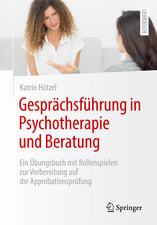Self-Control in Animals and People
Autor Michael Beranen Limba Engleză Paperback – 16 aug 2018
In addition to its comprehensive coverage of self-control research, the book also describes self-control assessment tests that can be used with young children, adults, and a wide variety of nonhuman species, with the goal of making fair and clear comparisons among the groups. This combination makesSelf-Control in Animals and Peoplea valuable resource for cognitive, developmental, and clinical psychologists, philosophers, academic students and researchers in psychology and the social sciences, and animal behaviorists.
- Provides a comprehensive perspective of the evolutionary emergence of self-control across species
- Explores different "kinds" of self-control and their links to one another, and whether self-control can be improved or strengthened
- Offers insight on mental time travel (chronesthesia) and how it relates to self-control
- Demonstrates how to develop self-control tests for human and nonhuman animals, and how to make fair and clear comparisons among those groups
Preț: 699.27 lei
Preț vechi: 736.07 lei
-5% Nou
133.83€ • 139.35$ • 113.10£
Carte tipărită la comandă
Livrare economică 03-17 martie
Specificații
ISBN-10: 012812508X
Pagini: 332
Dimensiuni: 152 x 229 mm
Greutate: 0.45 kg
Editura: ELSEVIER SCIENCE
Public țintă
academic researchers in psychology and social sciences (including behavioral economists and philosophers); cognitive and clinical psychologists; graduate students in psychology courses; animal behavioristsCuprins
1. What is Self-Control and What is it Good For?
2. Self-Control and Other Forms of Inhibitory Control
3. Human Intertemporal Choices: Choosing Between Now and Later
4. Intertemporal Choices by Nonhuman Animals
5. Children’s Delay of Gratification: How Long Would You Wait for Marshmallows?
6. The Reverse-Reward Task: Why Pointing Away from What You Want is so Difficult for Animals
7. Would Animals Pass a Version of the Marshmallow Test?
8. Other Tests of Self-Control and Delay of Gratification in Animals
9. How Do We Know Whether We Are Measuring Self-Control? Methodological Concerns Lead to a New Test
10. Is Self-Control Like a Muscle?
11. Do Animals Flex Their Own Self-Control "Muscle"?
12. Are Animal Tests of Self-Control All Measuring the Same Thing?
13. Self-Control and Social Settings
14. Mental Time Travel: What Is It, and How Does It Relate to Self-Control?
15. Worth Waiting For: Final Thoughts on Self-Control and the Future of Future-Oriented Research with People and Animals
Descriere
Self-Control in Animals and People takes an interdisciplinary look at what self-control is, how it works, and whether humans are alone as a species in their ability to demonstrate self-control. The book outlines historical and recent empirical approaches to understanding when self-control succeeds and fails, and which species may share with humans the ability to anticipate better future outcomes. It also provides readers with in-depth explorations of whether various species can delay gratification, the ways in which people and animals exhibit other forms of self-control, what influences the capacity and expression of self-control, and much more.
In addition to its comprehensive coverage of self-control research, the book also describes self-control assessment tests that can be used with young children, adults, and a wide variety of nonhuman species, with the goal of making fair and clear comparisons among the groups. This combination makes Self-Control in Animals and People a valuable resource for cognitive, developmental, and clinical psychologists, philosophers, academic students and researchers in psychology and the social sciences, and animal behaviorists.
- Provides a comprehensive perspective of the evolutionary emergence of self-control across species
- Explores different "kinds" of self-control and their links to one another, and whether self-control can be improved or strengthened
- Offers insight on mental time travel (chronesthesia) and how it relates to self-control
- Demonstrates how to develop self-control tests for human and nonhuman animals, and how to make fair and clear comparisons among those groups
























